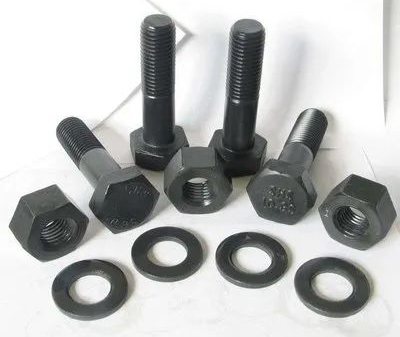Different heat treatment process types of screws
Dec. 25, 2023
We all know that screws need to undergo a heat treatment process during production in order to better achieve the screw production effect. Everyone may know the heat treatment process of screws, which are: normalizing, annealing, tempering and quenching. Method, what are the types of these four types of screw heat treatment processes?
One. Screw heat treatment process—normalizing type
The heating temperature is 30~50℃ above Ac3 or Accm, and is air-cooled after insulation. Since the cooling rate of normalizing is faster than that of annealing, the lamella spacing of pearlite is smaller, so the strength and hardness after normalizing are higher.
Normalizing applications:
① Increase the hardness of low carbon steel (low alloy steel) and improve the cutting performance.
② Eliminate the network carbides of hypereutectoid steel.
③Some medium carbon steel and medium carbon alloy steel parts with low stress and low performance requirements can be used as final heat treatment.
Two. Screw heat treatment process—annealing type
1. Complete annealing: After heating to 30~50℃ above Ac3 and holding, the furnace is cooled to below 500℃ and then air-cooled. Mainly used for hypoeutectoid steel and medium and low carbon alloy steel. The organization is F+P.
2. Spheroidizing annealing: a treatment process that is heated to 20~30℃ above Ac1 and kept warm, then cooled in the furnace to below 500℃ and then air-cooled. Spheroidizing annealing is mainly used for hypereutectoid steel and alloy tool steel. Granular pearlite is obtained.
3. Recrystallization annealing: Heating to the recrystallization temperature below AC1 (600-700 ℃) to eliminate the stress of cold work hardening.
4. Stress relief annealing: The workpiece is heated to 500~650℃ and then slowly cooled in the furnace. Used for hot rolling, castings, weldments, etc. (Eliminate stress caused by temperature difference)
Three. Screw heat treatment process—tempering type
According to the different performance requirements of the workpiece and the different tempering temperatures, tempering can be divided into the following types:
1. Low temperature tempering (150-250 degrees)
The structure obtained by low temperature tempering is tempered martensite. Its purpose is to reduce the internal stress and brittleness of quenched steel while maintaining its high hardness and high wear resistance to avoid cracking or premature damage during use. It is mainly used for various high-carbon cutting tools, measuring tools, cold stamping dies, rolling bearings and carburized parts, etc. The hardness after tempering is generally HRC58-64.
2. Medium temperature tempering (350-500 degrees)
The structure obtained by tempering at medium temperature is tempered troostite. The purpose is to obtain high yield strength, elastic limit and high toughness. Therefore, it is mainly used for the treatment of various springs and hot work molds. The hardness after tempering is generally HRC35-50.
3. High temperature tempering (500-650 degrees)
The structure obtained by high temperature tempering is tempered sorbite. It is customary to combine quenching and high-temperature tempering with a heat treatment called quenching and tempering. Its purpose is to obtain comprehensive mechanical properties with good strength, hardness, plasticity, and toughness. Therefore, it is widely used in important structural parts of automobiles, tractors, machine tools, etc., such as connecting rods, bolts, gears and shafts. The hardness after tempering is generally HB200-330.
Four. Screw heat treatment process—quenching type
Common quenching methods include single liquid quenching, double liquid quenching, graded quenching and isothermal quenching.
Single liquid quenching is a quenching operation method in which the austenitized workpiece is immersed in a certain quenching medium and cooled to room temperature.
In double-liquid quenching, after heating to austenitize, it is first immersed in a medium with strong cooling capacity. When the structure is about to undergo martensitic transformation, it is immediately transferred to a medium with weak cooling capacity for cooling.
For graded quenching, first put it into a salt bath and alkali bath with a temperature slightly higher than the martensitic transformation temperature, and keep it warm for 2-5 minutes. After the temperature of its surface and core is uniform, immediately take it out and cool it in the air. Martensitic transformation occurs.
Isothermal quenching, put into a nitrate salt bath or alkali bath with a temperature slightly higher than the Ms point, keep it warm for long enough to complete the bainite transformation, obtain the lower bainite structure, and take it out for air cooling.










